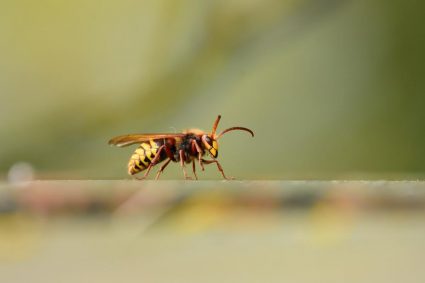
Moles can be a real nuisance in your garden, creating unsightly mounds and tunnels, and potentially causing damage to your plants and lawn. If you’re dealing with a mole problem, you’re not alone. Many homeowners struggle with these subterranean creatures. However, there are various effective strategies to deter moles from your garden or yard. In this comprehensive guide, we’ll explore these strategies in detail, providing you with actionable solutions to your mole problem.
To deter moles from your garden or yard, you can eliminate their food sources by controlling insect populations, create physical barriers with rocks or wire mesh, use natural repellents like castor oil or certain plants, set up traps in active runways, use ultrasonic devices, or encourage natural predators like snakes, owls, and foxes. If the infestation is severe, consider hiring professional pest control services. Always use humane methods to deter moles without causing harm.
Understanding Moles
Moles are small mammals that are known for their digging habits. They spend their lives mostly underground, digging tunnels in search of food. They primarily feed on insects, grubs, and earthworms. Moles can be active all year round, but their activity tends to increase during rainy days in late spring and summer, as well as late fall and early winter months as they prepare for hibernation.
Signs of a Mole Infestation
Before you can effectively deter moles, you first need to identify if they’re indeed the cause of your garden woes. Common signs of a mole infestation include raised, swelled areas and ridges on your lawn, molehills (mounds of dirt), areas of discolored or dead grass, visible tunnels on the surface, overturned soil, and small craters.
Risks and Damages
Moles can cause a variety of damages to your yard or garden. They can disrupt drainage patterns, causing water to pool in your yard, damage root systems of plants causing them to dry out and die, and create uneven ground, increasing the risk of tripping. They can also ruin the appearance of your lawn with their molehills and surface tunnels.
Effective Strategies to Deter Moles
Here are some of the most effective strategies for deterring moles from your yard or garden:
1. Eliminate Food Sources
Moles primarily feed on insects, grubs, and earthworms. By controlling the population of these insects in your yard, you can make the area less attractive to moles.
2. Create Barriers
Dig a trench two to three feet deep around the perimeter of your garden and fill it with rocks or wire mesh to prevent moles from digging into the area.
3. Use Natural Repellents
Castor oil is a common natural mole repellent. You can mix 6 oz. of castor oil and 2 tbsp of dish soap in one gallon of water and spray it on the affected areas. Some plants, such as daffodils, marigolds, alliums, fritillaries, mole plant, and castor beans, can also deter moles from gardens.
4. Trapping
Setting mole traps in active runways is an effective way to capture and remove moles from your yard. There are various types of traps available, such as harpoon, choker, and scissor-jawed traps.
5. Use Ultrasonic Devices
Some ultrasonic devices claim to deter moles by emitting sound waves that are unpleasant to them. However, their effectiveness is debatable.
6. Encourage Natural Predators
Encouraging natural predators, such as snakes, owls, and foxes, can help control the mole population in your yard.
Professional Services
If the mole infestation is severe or you’re not comfortable handling the situation yourself, you might consider hiring professional pest control services. Companies like Weed Man, Pest Defence, Rottler Pest Solutions, Smith’s Pest Management, and Creature Control offer professional mole control services.
Remember, moles can be beneficial to the environment by aerating the soil and controlling insect populations. Therefore, it’s essential to use humane methods to deter them without causing harm. With the right strategies, you can protect your lawn and garden from moles and maintain a beautiful, healthy outdoor space.
Frequently Asked Questions
How often should I apply the castor oil mixture as a deterrent?
Apply the castor oil mixture once a month during the mole’s active seasons, which are late spring, summer, and early winter. If it rains heavily, you may need to reapply the mixture.
Where is the best place to set up mole traps?
The best place to set up mole traps is in active runways. These are usually straight, long tunnels that moles frequently use. You can identify active runways by flattening a section of the tunnel and checking if it is raised again after a day or two.
What are some signs that the mole deterrent methods are working?
Signs that the mole deterrent methods are working include a decrease in the number of new molehills, less visible surface tunnels, and a lack of fresh mounds of soil in your yard or garden.
Can moles be harmful to humans?
Moles are not directly harmful to humans. They do not bite or carry diseases. However, the tunnels and molehills they create can lead to uneven ground, which can increase the risk of tripping and injuries.
How do moles benefit the environment?
Moles help aerate the soil by digging tunnels, which improves soil health. They also control the population of insects and grubs, some of which can be harmful to plants and lawns.










